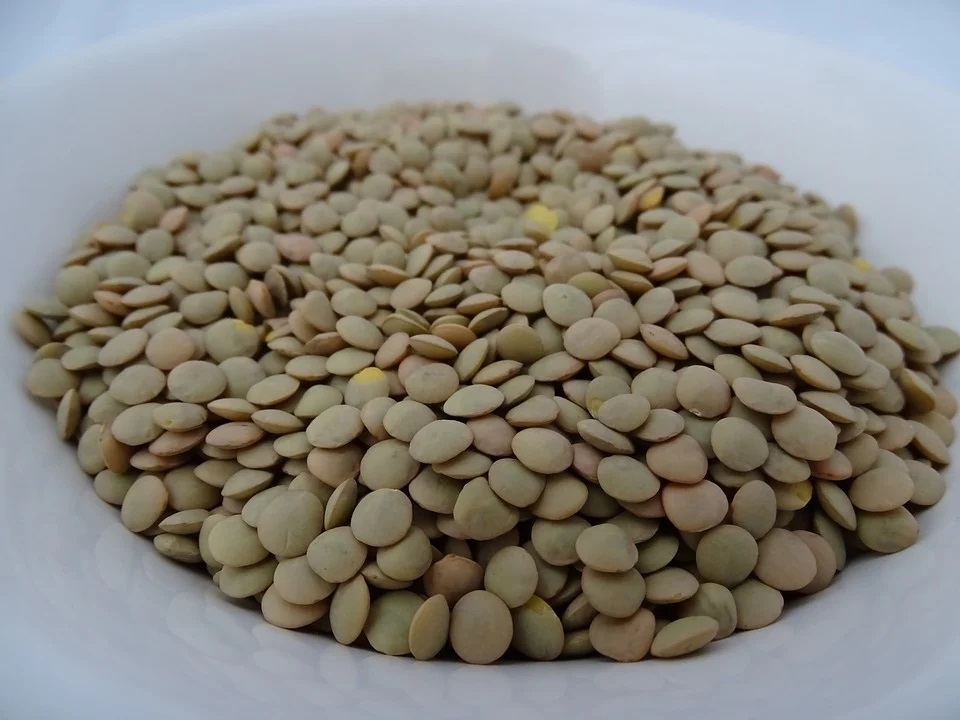A growing internal and external demand, driven by new eating habits based on the substitution of meat proteins, make legumes a synonym of opportunity for Argentina .
Importing markets require large volumes of supply, so the national challenge is to promote production, through incentives and the development of new seeds that improve the yields per hectare of the farms and allow to extend the sowing area, and help to resist threats of all kinds, including diseases specific to each crop. It happens that, just as there are large buyers, there are also strong competitors.
“An example for perspective: Argentina this year will end up exporting approximately 70,000 tons of green to yellow peas. If we were able to capture 10 percent of Canada’s share of sales to China, we would be exporting 280,000 tons In other words, we would be multiplying the current export volume by four. The challenge is to reach that volume. ” This is how the advisor Adrián Poletti, from Incrementar Consultoría Agropecuaria, graphs it.
The production volumes within the group of dried legumes are not homogeneous : in the case of beans, it amounts to about 300,000 tons, adding different varieties; it is followed by chickpeas (about 130,000 tons); peas (100,000 tons) and lentils, with between 40,000 and 50,000 tons.
“Argentina has great potential in beans. We have technology, surface area, commercialization, that is, everything in our favor to grow. The production of chickpeas accompanies the growth in demand, the Covid hit it very hard and it also comes from a great harvest in 2018 globally, which depressed prices and kept stocks high “, Poletti describes. It should be taken into account that, globally, between 2018 and 2020, the global trade in chickpeas was approximately 2.1 million tons, far from the 170 million tons of corn, 165 million soybeans or 190 million tons of wheat. , three key crops in Argentine extensive agriculture, according to the Ieral, of the Mediterranean Foundation.
“In the case of peas, you not only have to look at the yield per hectare, but also at the level of protein production. A pea that produces 22 percent protein is not the same as one that produces 28 percent” . Poletti highlights the potential that the country has in this crop. ” In 2020, China imported almost 2.8 million tons of peas from Canada . For China, Canada means 90 percent of supply and has to diversify origins. Argentina has the phytosanitary treaties approved and ready for the volume to increase “, Explain.
Regarding lentils, the work required to improve the results is great. “There is everything to do. It is a crop that must be reformulated, we must start from scratch practically, we do not have introduced genetics and the quantity that is produced is not enough to supply internal demand “, laments the consultant. And he adds: “The truth is that it is mischievous that Argentina does not participate in that species when it has the potential to do so without any problem.”
Comparative advantages
Canada, as the main supplier of the attractive Chinese market, is still a case study for Argentina, which exhibits a natural advantage in relation to the North American giant. “There, peas are a summer crop, because in winter they have a meter and a half of snow. In Argentina, both peas and lentils are winter-spring crops, so they can be produced without giving up area to others. crops , such as soybeans or corn, since both crops can be grown in the same year, in different seasons “, highlights Gabriel Prieto, from INTA Arroyo Seco.
Currently, Argentina exports 35 percent of its pea production to Brazil , while the rest of what it sells abroad is distributed among Asian and African countries and, to a lesser extent, to Europe. In Brazil, it is mainly destined for industrialization, through a rehydration process for later packaging in boxes, cans or jars.
But its sights are also set on China, which produces in large quantities, but at the same time demands more and more. ” If China today decided to import only from Argentina, there would be no capacity to satisfy that demand for two or three years because we would not reach that production . It is sown relatively little compared to other winter crops, such as wheat or barley,” Prieto illustrates. .
Just as it exhibits advantages, the country has disadvantages that slow down the expansion of the sector. “Argentine processing, freight and transnational transportation costs are very high. Better quality must also be achieved through more modern varieties, we have varieties that are more than 20 years old , the implementation of a seed law would help a lot”, warns the specialist. “The possibility of exporting in the warehouse and not in containers would also position us better and lower costs, or in bulk in containers and not in bags,” he adds.
For José D’Aloisio, a graduate of the Master in Agribusiness from the Austral University and a specialist in foreign trade, “Argentina is taking advantage of the opportunity and is working to be one of the most important suppliers at an international level.” He emphasizes that the demand is oriented “to the protein market” , so he agrees with Poletti that its quality is essential for that consumer. “It is more expensive to extract the protein, that is, to generate the protein isolate, but it is aimed at that,” he adds.
Sell to a leader
Last year, in the midst of a pandemic , the Cordoba company Desarrollos Agropecuarios del Sur (Dassa), owned by Gustavo Siciliano and Pablo Martínez, made a shipment of chickpeas to none other than the leader of legumes, Canada ; which, precisely because it is a key player in the market, is demanding.
“It was several months of work for that export. Selling to one of the main players was an achievement and a satisfaction,” Siciliano is proud. When determining the country’s position, it does not hesitate to point out the lack of incorporation of genetics, to incorporate – for example – seeds resistant to the so-called “chickpea rabies”, a complicated disease that affects crops. With better varieties, the exploitation area in the country could be extended, which today is concentrated in the north-central part of Córdoba and in the NOA , leaving out the core area and the province of Buenos Aires, for example.
Another stimulus for production depends on an external variable: the international price, which today is around US $ 500 per ton when it had exceeded the barrier of US $ 1000 per ton in 2017.
There is another variable not yet controlled by humanity: the weather, which last year was not favorable for cultivation in the Mediterranean province. According to the Córdoba Cereal Exchange, regarding chickpeas, “of the 17,800 hectares sown in the 2020/21 season, 18 percent were lost due to drought and health problems.” “With a yield of 13.6 q / ha, a final production of 19,800 tons is expected”, adds the work. “During the months of August, September and October the rains were lower than the historical average by more than 50 percent, which translated into a decrease in yields”, he completes.
For next year, the incorporation of new seeds is expected and also an improvement in international prices . “With these two situations, the chickpea will grow again in the north of Córdoba,” predicts the agricultural businessman.
Siciliano and other producers make up the so-called “Chickpea and other legumes cluster”, limited to the territory of Córdoba, with which they seek to empower the sector until it becomes a pole. According to its strategic plan, its mission is to “represent the Cordoba chickpea value chain and promote its sustainable development.”
Carlos Ferrari, who is an agronomist dedicated to coaching, initially participated in the initiative. “A cluster is an organization that brings together the different links in the chain to empower them and seek the best relationship, but also the best results within a value chain,” recalls Ferrari. And he adds: ” In this value chain, agreements must be made that can serve everyone, with a focus on the interest of the group .” From his role as facilitator, he organized workshops in which between 30 and 60 people participated.
“Our north is to emulate the clusters of Canada, where there is one in each province and all are aligned with the national chamber and work jointly,” says Pablo Campo, president of the nucleation and member of the Clera board of directors, who reports that Since March, the entity has been a formally constituted civil association. As a sample of the coopetence (combination of competition and cooperation) that characterizes the clusters, they have actions aimed at improving quality and opening markets , such as the Carbon Neutral Program, which includes the development of a cultivation manual to work in a sustainable way.


